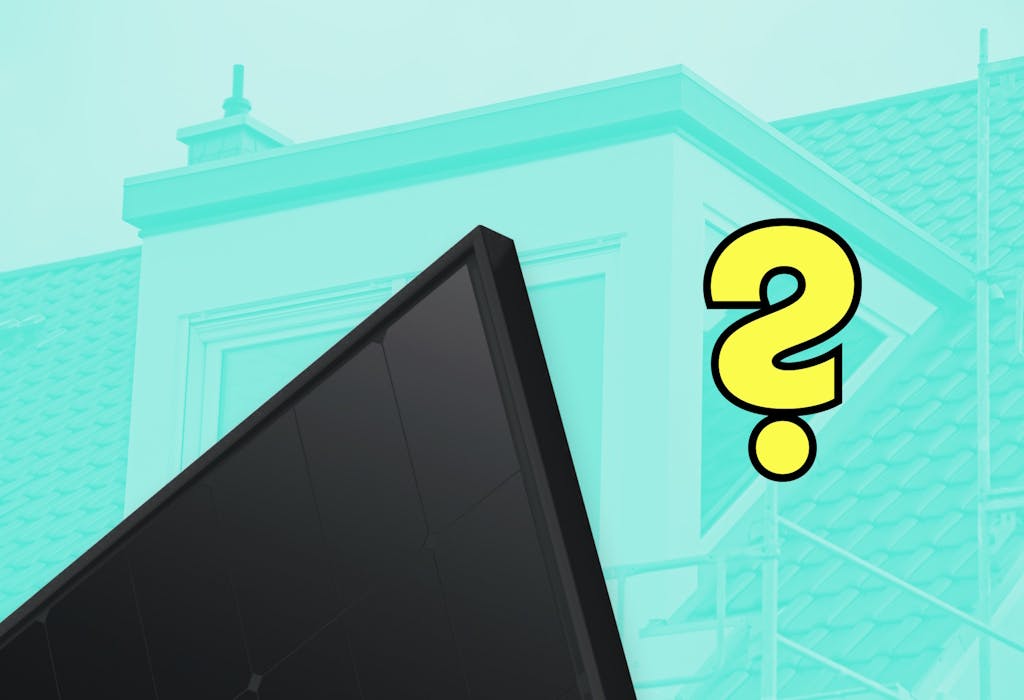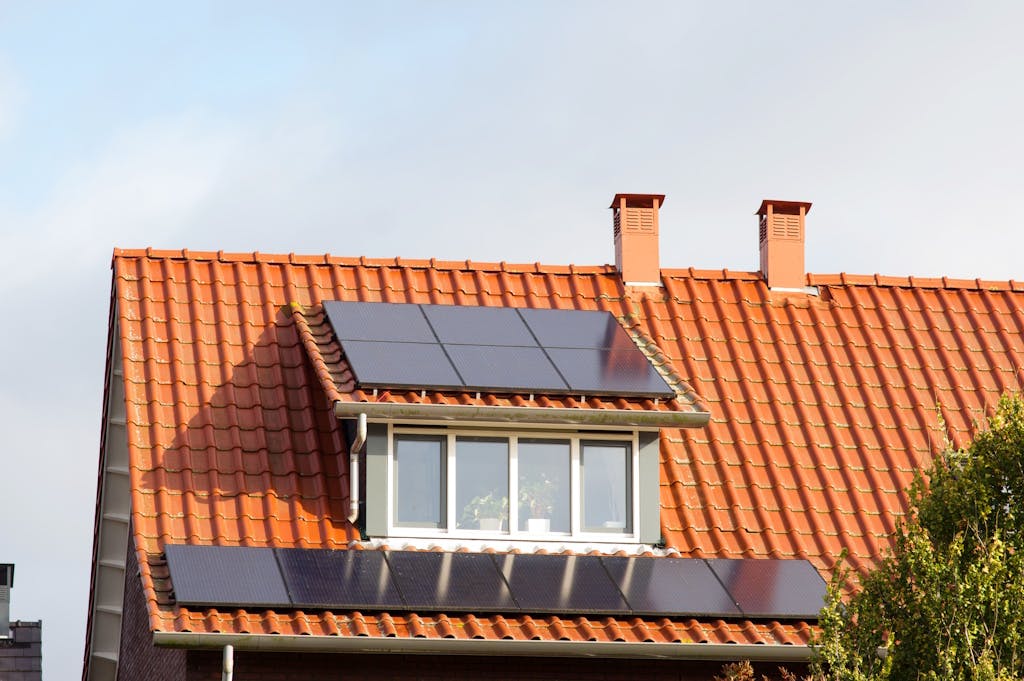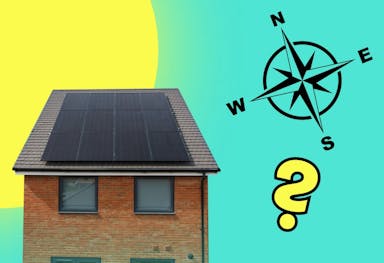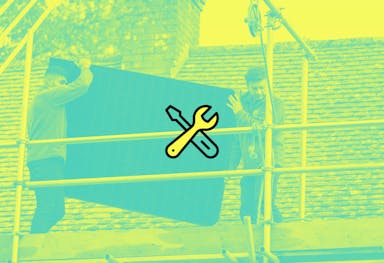- Solar advice hub
- Installation
- Can you put solar panels on a dormer roof?
Can you put solar panels on a dormer roof?
In this guide, we explain when dormer roofs are and aren’t compatible with solar panels, and what your options are if your dormer roof isn’t suitable.


Why you can trust our content
We know that the solar industry is full of misinformation, but we only use reliable sources, including:
- Our experienced solar experts, installers and system designers
- Our own database of solar & battery system designs
- Authoritative bodies like MCS and the UK government




Calculate savings
What kind of home do you live in?
Calculate savings
What kind of home do you live in?
Solar panels on dormer roofs: at a glance
Solar panel systems work best when you maximise your roof space, so it makes sense to include your dormer roof in any solar installation.
And while dormer roofs present difficulties for installers, they can still be a viable place for you to add panels.
More than 1.6 million UK households have now gone solar, many of which have complex rooftops that required a considered approach. You just need the right installer.
In this guide, we’ll explain when dormer roofs are and aren’t compatible with solar panels, and what your options are if your dormer roof isn’t suitable.
If you’re wondering how much you could save with a solar & battery system, enter a few details below and we’ll provide an estimate. And if you have a dormer roof, we’ll see if we can work around it.
What is a dormer roof?
A dormer roof is the technical term for a kind of loft conversion that can add space to the top floor of your home.
In the UK, dormers tend to either look like a flat-roofed shed that’s been fixed to the top of a house, or a window that sticks out from a roof.
It can span the entire width of a roof, or simply provide an extra window. At any size, a dormer can turn the top floor of your property into a usable living space, by providing the necessary light and ventilation.
It’s one of the most popular forms of loft conversion, and is often used to provide homeowners with an extra bedroom, study, or playroom.
A dormer can also increase your home’s value, since the more floor space you can offer, the more attractive your property generally is to buyers.
The word ‘dormer’ dates back to 1592, according to the Oxford English Dictionary, and has its roots in the Latin word ‘dormire’, which means ‘to sleep’. This makes sense, considering how often they’re used as bedrooms.
Different types of dormer roof
The three most common types of dormer roof are the flat roof dormer, the gable-fronted dormer, and the hip roof dormer.
As you might expect, flat roof dormers include a flat roof that sticks straight out from a pitched roof. They’re shaped roughly like a right-angled triangle, though sometimes with a slant that allows rainwater to run off.
Gable-fronted dormers are sometimes called dog house dormers because of their appearance. They feature two sloped sides that meet in a ridge along the top.
Hip roof dormers, which are also known as hipped dormers, include three sloped sides that again rise to a ridge at their peak.
There are other, more obscure types – such as eyebrow, pyramidal, and polygonal dormers – which give households the variety they need to find a style that works for them.

Are dormer roofs compatible with solar panels?
Dormer roofs can be compatible with solar panels, but it depends on the type of dormer.
Flat roof dormers aren’t usually suitable, for the same reason it’s always tricky to put solar panels on flat roofs: you can’t drill into the rafters, because when it rains, your roof can leak.
Your installer could secure the panels with ballasts – but this adds around 80kg per panel, making your system about five times heavier.
The vast majority of roofs in the UK can hold the normal weight of a solar array, which is about 200kg for a 10-panel system, but a tonne can pose problems.
This is why we generally advise against putting solar panels on flat roofs, including flat roof dormers.
Verified expertWith dormer roofs, the rafters have usually been covered for aesthetic reasons, which makes it very difficult to verify the structural safety of the roof. It’s still possible to install solar panels on a dormer roof, but you’ll need to arrange for a physical inspection by a structural engineer.
Tom Brehme
Technical Manager at Sunsave
Tom has worked in residential solar installation for more than a decade, and is a fully qualified electrician.
What about a dormer with a sloped roof?
Dormers with a sloped roof, like a gable-fronted or hip roof dormer, will usually be better suited for solar panels, as they tend to be more structurally sound than flat roofs.
However, your installer will probably still want to carry out a structural survey, which will add to your costs.
And even if your dormer roof passes this test, it may not be large enough to make a solar installation worth it.
Solar panels are roughly 2m², and the guidelines created by Microgeneration Certification Scheme (MCS) and Flexi-Orb tell installers to leave around 3cm between panels, and 40cm between each side of the system and the roof edge.
As a result, each panel uses just over 3m² of space. So even if you have a 20m² dormer roof, you’ll only be able to get six panels installed.
This is why it’s generally best to avoid putting solar panels directly onto a dormer roof.
If you have a dormer and want to find out if a solar & battery system would still work for you, our solar specialists can take a look. Just enter a few details below, and we’ll provide you with a savings estimate.
How to install solar panels if you have a dormer roof
Even if your dormer roof isn’t suitable for solar panels, you may still have options that allow you to make the switch.
Here are some of the most common solutions, and how they could work for you.
Install around your dormer
If you have enough roof space, you can get solar panels installed around your dormer.
A three-bedroom household will usually want at least a 4 kilowatt-peak (kWp) system, which could mean getting eight or nine 450-watt panels, for example. For this number of panels, you’ll need 25-30m² of space, as a minimum.
If your dormer casts a significant amount of shade on your roof, you should ideally avoid installing panels in those shadowy spots, as shade on one panel can reduce the output of every panel connected to it.
If space is tight, you can still put panels in the shade, as long as your installer puts those panels on a different string inverter to your other ones.
This allows your unshaded panels to keep operating effectively, regardless of whether your other panels are occasionally shaded.
If it’s necessary, your installer may also recommend attaching microinverters to your panels in order to maximise output, though this is the more expensive option.
Choose an alternative roof
If you have a dormer dominating your south-facing roof, you may feel like you’ve blocked yourself from switching to solar – but fear not.
Solar panels usually perform excellently on an east-facing or west-facing roof. You should see a smaller daily peak in output, but your system will produce electricity for a longer portion of the day.
We install plenty of east-west systems, with great results. East-facing panels generate more electricity in the morning, and west-facing panels produce more in the afternoon.
Even roofs that face north-east or north-west can be suitable, which is why we’ve installed systems on these roofs too – for example, Richard’s north-east-facing system in Hampshire.
He expects to break even on his investment just 6.5 years after the installation.
There’s no question that when it comes down to choosing between north-facing and south-facing panels, homes in the Northern Hemisphere benefit from looking southwards – but your north-facing roof can still contribute.
York-based solar installer Oval Renewables provided evidence of this when they installed two identical systems on a rooftop in Newcastle – one facing south and one facing north – and the north-facing panels produced an impressive 35% of the system’s total annual output.
A good installer will assess your roof space and find a solution that can help you substantially cut your electricity bills.
To learn more, check out our guide to what makes a roof suitable for solar panels.
Get ground-mounted solar panels
Households that lack usable roof space can get ground-mounted solar panels instead, though there are a few more drawbacks.
Firstly, you’ll need to give over a large area of land to your solar panels. Even if you have enough space, you’ll be covering ground that could be used for other purposes.
Other than solar panels, dormers are the only other thing people are likely to put on a roof, whereas gardens or fields can host football matches, flowerbeds, barbecues, paddling pools, jungle gyms, and more.
They also tend to be much more expensive than rooftop systems.
If you’re buying a 10kWp array, you’ll pay around £27,000 to have it installed on the ground, according to Spirit Energy, but roughly £15,000 to get it on your roof.
You’ll also probably have to apply for planning permission, which you rarely need if you’re installing solar panels on a roof.
If your ground-mounted system is more than three metres wide or deep at any point, is installed within five metres of your property’s boundary, or takes up more than 9m², you’ll require permission.
And if you ever add extra panels to your installation at a later date, you’ll have to apply all over again.
For more information, read our full guide to ground-mounted solar panels.
Summary
Having a dormer roof won’t necessarily stop you from going solar. Even if your dormer has a flat roof and/or isn’t strong enough to support panels, a good installer will usually be able to find alternative solutions.
Modern solar panels make this task considerably easier, as they can generate plenty of electricity, even when installed on roofs that face north-east or north-west.
The best way to get the system you want is to hire an installer like Sunsave. We have all the necessary accreditations and certifications, as well as a track record of finding installation solutions for homeowners.
If you have a dormer roof and you’re wondering how much you could save with a solar & battery system, enter a few details below and we’ll provide an estimate.
Solar panels on a dormer roof: FAQs
Related articles

Written byJosh Jackman
Josh has written about the rapid rise of home solar for the past six years. His data-driven work has been featured in United Nations and World Health Organisation documents, as well as publications including The Eco Experts, Financial Times, The Independent, The Telegraph, The Times, and The Sun. Josh has also been interviewed as a renewables expert on BBC One’s Rip-Off Britain, ITV1’s Tonight show, and BBC Radio 4 and 5.








